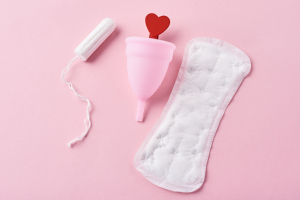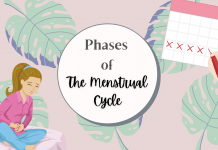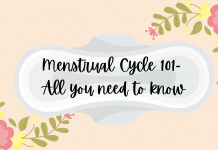Menstrual hygiene products are those products that are used for collecting or absorbing the menstrual flow which includes pads, tampons, cups, and more!
Menstrual Hygiene Products- Pads, Tampons, Cups, and more!

Different types of menstrual hygiene products are used by different people and their choices can be affected by many factors based on their personal preferences, lifestyle, usage hours, medical conditions, comfort, religious and cultural beliefs.
However, at the end of the day, it is up to you what you want to use and how you would like to go about it.
In case you do not find the method or product you have previously been using, you should be able to go for the alternates without the fear of being judged.
What you choose to use for menstrual hygiene is a choice that is yours alone.
However, if you are new to this, you may even ask a trusted person to guide you in the process.
Do be mindful that it is your decision whose suggestion you wish to take.
In case, you have a medical condition, like thrush or vaginal dryness, it is advisable to consult with your gynecologist.
Sanitary pads

‘Sanitary Napkins’, also known as ‘Sanitary Pads’, or just ‘Pads’, are absorbent items that you can stick inside your underwear. Some of them have extra material called ‘wings’ on their sides that are folded over either edge of the underwear.
Sanitary pads function by absorbing the menstrual flow coming out of the vagina. There are different types of pads available in the market and you can select depending on your usage and flow. Pads can with or without wings and they come in various sizes and thicknesses.
How to use:
- Before you get your hands dirty, clean them. Wash your hands before taking out the pad.
- The sanitary pad will be present in a wrapper. Once you pull it out and open it you will realize the sticky parts are covered with a paper film, almost like a sticker.
- Peel off the paper film to expose the sticky part of the pad that is supposed to stick to the underwear
- Hold your underwear in a position you find comfortable and stick the pad on the inside of your underwear.
- Now, if you are using a pad with wings, remove the paper film uncovering the sticky area of the wings, and fold it at the edges of your underwear
- Wear your underwear as you usually do. Your pad should be covering your genitalia.
Duration: Like tampons, pads need to be changed after every 5 to 6 hours. Usually, one pack is enough for one menstrual cycle.
Here are a few precautions you should take while using sanitary pads.
Sanitary pads are widely preferred as menstrual hygiene products by many people and are the most accepted in many cultures. However, it is, after all, a synthetic product.
Precautions-
- Change your pad every 4-6 hours, do not use a pad for more than 6 hours.
- Make sure the pad does not fold inward while wearing to avoid leakage.
- If you have to change the pad every 3-4 hours a day because of the flow, it could be a sign of some underlying problem. It is advisable to consult your ob/gyn for the same.
Other Types of Pads-
If you do not like the idea of disposable one-time-use pads and prefer using something eco-friendly instead, you can use organic pads or cloth pads as well.
Both have similar usage and have almost similar absorbency and similar usage. However, the price may vary for both.
Tampons

Tampons are menstrual hygiene products used for absorbing the menstrual flow. Their function is similar to pads but the difference is that they are inserted inside the vagina. If you are looking at tampons to use as menstrual hygiene products, you should know how to insert them.
Tampons are menstrual hygiene products made of absorbent material and are small and cylindrical in shape. They are made of a blend of cotton and rayon and have a cord extending from the end that is used for their removal after use.
Tampons come in various shapes and sizes having different levels of absorbency, designed to hold six to eight grams of your period blood. Depending upon your flow, amounts of blood lost may vary and the size of tampon you use will also change according to that.
Tampons come majorly in two variants- with and without an applicator.
Applicators are small tube-like structures made of plastic or wood. They are used to place the tampon inside the vagina.
Teens usually find it more comfortable to use a tampon with an applicator. However, you can get yourself tampons without an applicator as well once you are confident.
How to insert a tampon
- Sit on the toilet with your knees apart.
- With one hand, hold the tampon from its middle with your thumb and index finger.
- Keep your index finger placed on the end of that thinner tube, where the cord extends.
- Use the tip of your tampon to open up the folds of your skin and insert the whole barrel in your vagina keeping it angled toward your back as inserting it in an upright position may be painful.
- Insert it as far as your index finger and thumb go.
- Once the barrel comfortably gets inside, using your index finger, push the absorbent part upward in your vagina.
- Pull out the barrel using your thumb and middle finger leaving only the string. This string will be used to pull the tampon out later
- Cover the applicator with toilet paper or just place it back in the plastic lining.
- Dispose of the applicator by throwing it in the dustbin. DO NOT flush the applicator or the tampon in the toilet.
Precautions while using a tampon
- Make sure you change the tampon every 4 to 5 hours. Otherwise, you are at risk of suffering a serious health condition called Toxic Shock Syndrome (TSS).
- Cover the used items- the tampon and applicator and dispose of them in a dustbin.
- Do not flush the applicator and tampon in the toilet.
- DO NOT forget your tampon inside your body. Set an alarm if you need to be reminded.
When to Remove a tampon
- Tampons should be changed every 4-5 hours to avoid leakage and spotting.
- Never leave a tampon in for more than eight hours to avoid Toxic Shock Syndrome (TSS).
- TSS is very rare, but it’s important to be well aware of its signs and symptoms.
- TSS is caused by a bacterial infection that can prove to be potentially fatal while using super-absorbency tampons or if you leave them in for extended periods of time.
Symptoms can show up very quickly and include:
- Faintness
- High fever
- Low blood pressure
- Headache
- Vomiting or diarrhea
- Remove your tampon immediately and call your doctor if you experience signs and symptoms of TSS.
Tampons are preferred by a lot of people as they are compact and easy to carry. Tampons can sometimes be preferred over pads as you can also go swimming wearing them.
Menstrual Cup

Menstrual cups are small, funnel-shaped silicone cups that are inserted into the vagina for the collection of menstrual blood during menstruation. They are inserted into the vagina just like a tampon. However, pads and tampons are used to ‘absorb’ the blood while blood is ‘collected’ in menstrual cups.
How to insert a menstrual cup
-
-
-
- First, it is important to wash your hands thoroughly with soap and water.
- For convenience, you can apply water or water-based lube to the rim of your cup.
- Hold the cup with its rim facing upwards and fold the cup in half.
- Now, take the cup near the vaginal opening and enter it in the rim-first position (the rim should face upwards). If you have ever used a tampon, the process is very similar to putting a tampon using an applicator.
- When the cup is in your vagina, rotate the cup. It will spring and make a ‘pop’ sound ensuring that the cup has opened. This will create an air-tight seal.
-
-
How to remove the menstrual cup
-
-
-
-
- Sit on the toilet seat with your legs apart to break the suction.
- Using your index finger and thumb, pinch the base of the stem of the cup.
- Gently pull the cup downward. Do not pull out too quickly to avoid spilling blood.
- Pour the liquid out into the toilet and rinse the cup with regular tap water.
-
-
-
Precautions
-
-
-
-
- Make sure you wash your cup regularly.
- After every menstrual period, wash and boil the cup in hot water to sanitize or follow the cleaning instructions if available with the cup.
- Do not use the cup for more than 10-12 hours. It could cause a serious condition called TSS (Toxic Shock Syndrome).
- Keep the cup out of your pets’ reach. Pets like cats and dogs tend to use these cups like chew toys.
- Do not forget the menstrual cup inside your body
- Purchase cup wipes if you happen to use the public restroom to empty your cup.
-
-
-
Some More menstrual hygiene products to choose from
If the menstrual hygiene products listed above are not enough for you, there are more to choose from!
For example, you can also use panty liners if you have a light flow on the first or last few days of your cycle. Pantyliners are just like pads, but without wings, and are much smaller than the regular pad.
Another alternative is period panties or period underwear. Period underwear is worn like regular underwear and is designed to function as a pad. However, they need to be washed after use.
The best part is they are reusable and are easy on the environment. What you choose to use is your choice alone. However, there are some myths around certain menstrual products like tampons and cups claiming that they “take away your virginity” or “break the hymen” where the former is just a sham.
The latter is a possibility if you insert a cup or tampon incorrectly or use the wrong size but that is not very common since there is enough lubrication when your period is around.
If you liked Menstrual Hygiene Products- Pads, Tampons, Cups, and More then also read 7 Tips about maintaining good menstrual hygiene for your period
If you want to keep up with us, also follow us on Facebook




